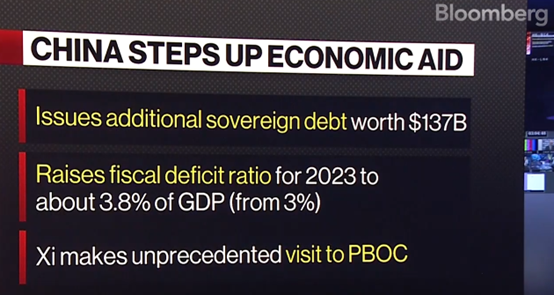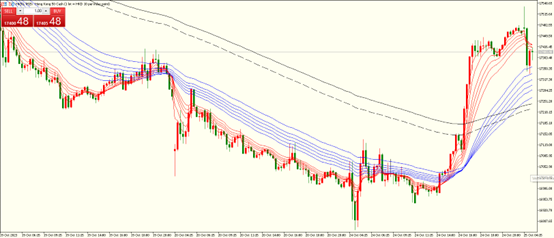市场资讯及洞察
.jpg)
最近很多新闻都在疯狂炒作13F公布的美股大空头Michael Burry的空头持仓,因为在公布的持仓当中显示Michael Burry通过期权大量看空英伟达和Palantir两家AI行业的风头企业。
Michael因为在08年的次贷危机中大幅看空美国的地产行业通过金融衍生品CDS的互换合约在08年全球性的金融危机中大赚特赚了一笔而成名,此后根据其真实经历改编的电影《大空头》更是风靡全球。
近期从监管部门的公开资料中显示Michael Burry管理的Scion在2025年的Q3披露文件中显示买入了大量的英伟达和Palantir 的看空期权,其中1.87亿美元看空英伟达,9.12亿美元看空Palantir,市场也被这波操作吸引带动,两家公司股价承压后连续下挫,甚至是Palantir的CEO在社媒上破防怒斥为何要做空那些赚的盆满钵满的公司?
其实实际情况是媒体在新闻上喜欢噱头来博取眼球,看似8成仓位押注两家AI企业暴跌的持仓实际上是他持仓的看空期权的名义价值,而真实对应的期权成本可能远远小于实际情况。Michael习惯性的运用金融衍生品工具的特性,利用可控范围的风险对可能产生的AI泡沫破裂进行重要压注。并不是说他真的把80%管理的资产押注在了两家风头正盛的公司的暴跌上,而且因为相关信息的缺失,什么时候离场,以及是否在对冲其他持仓等因素其实外界并无法确切知悉,所以现在就对美股AI报以极度悲观的态度是非常情绪化且不准确的。

而根据Michael自08年以后的投资来看其交易实际上并不是每次都很准,具体总结如下:
- 2015年12月预测股市崩盘:Burry在2015年底公开警告股市将在未来几个月内崩溃然而,S&P 500在随后一年(2016年)上涨约11.96%
- 2020年3月重注看空市场:Burry在疫情初期下重注做空但从2020年3月低点起,美股在12个月内反弹约72%这被视为他的重大失误之一。
- 2022年9月警告股市未触底:Burry在9月发推警告市场将持续“失败“,尚未见底但从2022年9月到2023年8月,S&P 500反弹约21%他的预测又一次“早于市场“。
- 2023年1月敦促“卖出“:Burry在1月底发单字推文“Sell”,预言经济衰退和新通胀浪潮,结果,S&P 500在2023年全年上涨约24.23%,远超他的悲观预期。
那对于普通投资者究竟如何合理看待这种明星基金经理的持仓呢?
其实大部分资管公司都有自己的持仓和投资逻辑,无论是多还是空,可能都是整体布局的一个部分,媒体放大一个角落使得很多投资者在面对相关问题时显得管中窥豹一般无法总览全局,从Michael的一系列表态中也可以看出他虽然暗示了本轮AI的泡沫和2000年科网崩盘存在相似性,将其作为对市场的警告或许不失为一种合理的看待方式,但是这并不意味本轮AI的发展和走势就将戛然而止,AI的发展或将在接下来更长期的时间里影响每一个人的生活。
免责声明:GO Markets 分析师或外部发言人提供的信息基于其独立分析或个人经验。所表达的观点或交易风格仅代表其个人;并不代表 GO Markets 的观点或立场。
联系方式:
墨尔本 03 8658 0603
悉尼 02 9188 0418
中国地区(中文) 400 120 8537中国地区(英文) +248 4 671 903
作者:
William Zhao | GO Markets 墨尔本中文部


热门话题在风起云涌的加密货币世界中,少数人敢于挑战未知,冒着巨大风险追求更大的回报。今天,就让我们一起探讨一下这位加密领域的领军人物——Sam Bankman-Fried(SBF)的故事,看看“赌徒”心态在投资世界中是如何成为一把双刃剑的。

Sam Bankman-Fried。1992 年出生于加利福尼亚,在美国长大。在毕业之后,SBF进到了华尔街一家叫做Jane street 的自营性质的交易公司进行ETF的交易,在此期间为公司开发了各种的算法和交易策略。他还获得了风险管理和优化投资组合方面的经验,这些经验后来为他在加密货币行业的工作提供了信息。在2017年,SBF成立了自己的量化公司Alameda Research。因为当时加密货币监管,信息差等问题,疯狂套利赚钱,并且开发改进了交易策略。在2019年,SBF成立了自己的加密货币交易所FTX,也创造了原生加密币FTT。但是,SBF在客户不知情的情况下,SBF让FTX借了超过80亿的资金给Alameda Research(AR),让AR去购买自己的加密货币FTT,不断的抬高自己的FTT价值,吸引更多的投资者。FTX再把客户和投资者的钱借给AR,再去加密货币市场上进行套利操作。而且不只于此,AR也私自借了超过五亿美金给SBF本人去购买Robinhood 股票。但是Luna币的崩盘,加上加密货币的不景气,单只FTX出现了挤兑,并且宣布了破产。近期也是在进行最终审判。那么今天讲的故事就是,SBF在Jane street实习期间发生的故事。SBF和同期实习生被Jane street 教育要学会如何思考,鼓励对赌。无论进行什么样的比赛都可以。但是,当天的最大亏损不可以超过100美金。突然有一天,有一个赌局出现,SBF对手方Asher Mellman。赌局内容:双方达成一个65美元的协议:如果任何实习生当天的亏损超过了65美元,Asher需要支付给SBF超出的部分;而如果所有实习生的亏损都没有达到65美元,SBF则需要补偿Asher 65美元减去最大亏损的差价。也就是,如果一个实习生的亏损达到100美元,那么SBF会收到额外的35美元;反之,如果实习生的最大亏损只有50美元,那么SBF需要给Asher 15美元。我们首先来看这个赌局:
- 单日最大亏损为100美金
- 对于SBF而言,本次赌局最大盈利为35(100-65)美金,最大亏损为65美金
- 对于Asher 而言,本次赌局最大盈利为65美金,最大亏损为35美金
单从数据上来看,SBF的盈亏比相当不合适,这是一个处于完全下风的赌局。然而,我们忽略了一个问题,就是亏损概率。因为没办法拿到近期实习生最大亏损的数据,所以只看盈亏比来说,SBF处于被动。然而SBF不可能甘心与如此被动。于是他开了一个新赌局:抛硬币赌局。如果在场任何实习生愿意抛硬币,无论输赢,都会给参与者1美元的奖励,赌注为98美元。那么我们分析下这个新赌局。掷一个硬币:胜率为50%,亏损率为50%。对于任何参与者:目标盈利 = 0.5 × 98 + 0.5 × (-98) + 1 = 1美金。我们再来看看新赌局加入后,SBF和Asher发生了怎么样的变化。对于SBF:如果SBF赢了,利润是98+(98-65) -1 = 130美金如果SBF输了,利润是-98+(98-65)-1 = -66美金目标利润 = 0.5 * 130 + 0.5 * (-66) = 32美金之前:SBF的最大利润是35美金,最大损失是65美金 --> 现在最大利润是130美金,最大损失是66美金对于Asher:如果SBF赢了,利润是-33美金如果SBF输了,利润是-33美金之前:Asher的最大利润是65美金,最大损失是35美金 --> 现在最大利润是-33美金,最大损失是35美金。SBF在可能亏损增加1美金的情况下,把可能收益从最大35变到了130美金。按照概率来算,目标利润变成了32美金。而Asher,无论这个硬币赌局如何发展,他都会亏损超过33美金。然而有意思的事情开始了,SBF运气很好,一开始就赢了第一局。然而他也并没有停止。继续开了下一局,抛硬币赌注一点点上涨。于是连赢三局后,在四局输了。

此时,SBF的收益最终变成了227.25美金。而Asher 为亏损34美金。理论上,如果SBF一直赢,那么他可以赢光所有实习生当天的钱,而最大亏损也就是66美金。我们现在设想一个假设,如果Asher亲自参与比赛,结果如下:对于SBF:如果赢了,利润=130美金,但每日亏损上限为100美金,所以利润为100美金。如果输了,损失=66美金。对于Asher:如果赢了,利润=98-(98-65)+1=66美金。如果输了,损失=100美金。对于SBF:预期利润=0.5100+0.5(-66)=17美金。对于Asher:预期利润=0.566+0.5(-100)=-17美金。那么当他亲自下场,SBF目标利润有所下调,但是Asher还是会输。因此,之前未知概率,盈亏比不合适的赌局一下子被SBF转变为,概率已知,盈亏比非常合适的赌局中。杀的Asher片甲不留。从这个时间我们可以发现的是,SBF非常会管理预期,无论是自己的还是对手的。实际上在这个事件上没问题,因为上限100美金,而且还是自己的钱。但是如果说换一个情形,这赌注的资金有一部分是借的,那么这个赌局的就会变得更复杂,更接近于现实情况,这个时候,对于SBF 不仅是 FTX 交易所的创始人,更是一位敢于在加密货币市场上大胆投资的人。他的成功并非偶然——这是对市场极度敏锐的洞察力与不畏风险的“赌徒”心理的完美结合。然而,“赌徒”心态是一把双刃剑。一方面,正是这种高风险、高回报的策略使得 SBF 能够在瞬息万变的加密市场中脱颖而出,实现了他的财富积累。另一方面,这种策略同样伴随着巨大的风险——市场的不确定性意味着每一次投资都可能导致失败和财富的损失。SBF 的故事教会我们一个重要的教训:在投资世界中,我们必须学会平衡。我们可以从他的故事中学习到,冒险是必要的,但过度的“赌徒”心态可能会导致灾难性的后果。智慧在于,知道何时冒险,何时保守。投资不是赌博,它需要的是策略、耐心和知识。让我们从SBF的故事中汲取智慧,学会在“赌徒”心态和谨慎决策之间找到自己的平衡点。这样,我们或许都能在各自的领域中,找到属于自己的成功之路。风险的把控,资金量的控制和运用也是必不可少的。免责声明:GO Markets分析师或外部发言人提供的信息基于其独立分析或个人经验。所表达的观点或交易风格仅代表其个人;并不代表GO Markets的观点或立场。联系方式:墨尔本 03 8658 0603悉尼 02 9188 0418中国地区(中文) 400 120 8537中国地区(英文) +248 4 671 903作者:Neo Yuan | GO Markets 分析师


热门话题习主席于24日任主席以来首次访问中国央行,增发主权债务,提高预算赤字率。核心内容:将 2023 年财政赤字率提高至国内生产总值 (GDP)的 3.8% 左右,远高于 3 月份政府普遍认为的国家上限 3% 。该计划包括在第四季度额外发行价值1万亿元人民币(1,370亿美元)的主权债务,以支持救灾和建设。更多的分析师认为,此举为了消除房地产建设和出口下降带来的不利影响。

24日批准的额外财政支持是我们一直期待的干预措施,因为要盘活市场,也要盘活政府资金,需要新的资金介入,同时防止中国在今年最后几周陷入财政紧缩。预算修订凸显了领导层对明年经济前景的担忧,以及公布了一个信号:政府更加注重支撑经济和金融市场。同时,当天公布蓝佛安接替刘昆出任财政部部长,免去刘昆同志的财政部党组书记职务。股市表示很开心,这些举措发出了积极的财政信号:美股中概股普遍上涨,电动汽车制造商小鹏汽车股价上涨超过10%。恒生晚盘大幅度拉升,直接拉了500点。富时中国 A50 期货也加入了涨势。二级市场上,中投公司等中资背景的基金本周持续买入China50成分股中的核心股票,以国有银行股票为主。未来有拉盘可能性。第三季度强于预期的数据导致,中国政府对今年经济实现5%的目标“非常有信心”。不过,一些挑战可能会持续到 2024 年,包括房地产市场持续动荡和通货紧缩压力带来的问题。经济学家预计明年增长率将放缓至 4.5%。未来,通过发行主权债券为基础设施投资融资也可能反映出政策思维的转变,将更多的财政负担置于中央政府身上,而不是那些已经没有杠杆空间的地方当局。这样做减弱了地方财政的权限,但也让资金使用率更高,更有效,权力的压缩也意味着贪腐空间进一步缩减。由中央出面来帮助地方政府解决财政问题。财务部表示,将充分利用直达机制,将国债支出资金全部纳入财政直达资金范围,实施全流程跟踪监测,确保资金按规定用途使用。

2023年全国财政赤字由38800亿元提高至48800亿元,中央财政赤字由31600亿元增加到41600亿元,预计财政赤字率由3%提高到3.8%左右。中国的整体政府负债率低于主要经济体国家,所以中央政府敢借钱,对经济确实有提振作用。未来中国将更多的工作重心放在金融领域,善用金融和财政工具,助力中国经济平稳过度到下一个阶段。

GO Markets可以交易的产品:美股中概股、港股、China50、HK50对于没有时间钻研个股的投资者,可以直接选择China50、HK50或银行股。对于买入的时间,我们此前也提到了,政策持续利好的背景下,市场信心需要逐渐恢复。但前期战争导致美元流出香港,恒生下跌拖累中国股票市场,所以目前有新的政策支持,也是需要一段时间,才能够扭转形态开始上涨。因此,大家依旧要做好布局,通过定投的策略逐步建仓,而不要想今天买入,明天就可以大涨。

免责声明:GO Markets分析师或外部发言人提供的信息基于其独立分析或个人经验。所表达的观点或交易风格仅代表其个人;并不代表GO Markets的观点或立场。联系方式:墨尔本 03 8658 0603悉尼 02 9188 0418中国地区(中文) 400 120 8537中国地区(英文) +248 4 671 903作者:Jacky Wang | GO Markets 亚洲投研部主管


NFP is a significant economic indicator released monthly by the U.S. Bureau of Labor Statistics. It provides a comprehensive overview of the employment situation within the United States, making it one of the most closely watched economic reports in the financial world.
Understanding NFP The Non-Farm Payroll (NFP) report serves as a gauge in the realm of economic indicators, offering insights into the employment landscape of the United States. Specifically, the NFP report quantifies the aggregate number of compensated American workers, deliberately excluding certain categories such as agricultural workers, government employees, private household staff, and those employed within nonprofit organisations. This deliberate omission of such sectors is what lends the term "nonfarm" to this influential economic metric.
Crucially, the data encapsulated within the NFP report provides a holistic overview of the employment scenario, encompassing both full-time and part-time workers. By incorporating this comprehensive view of the workforce, the report becomes a valuable tool for analysts, policymakers, and investors, enabling them to discern nuanced trends and patterns within the labour market. The intricate details of full-time and part-time employment shed light on the multifaceted nature of the U.S. workforce, offering a more nuanced understanding of economic dynamics.
In essence, the NFP report stands as a testament to the intricate tapestry of the American job market. Its exclusion criteria, shaping it into a "nonfarm" indicator, serves the vital purpose of capturing a specific segment of the working population, allowing for focused analysis and informed decision-making in the realm of economics and finance. Why NFP is Important: Economic Health: NFP numbers offer valuable insights into the economic health of the United States.
A higher number of jobs added usually indicates a growing economy, while a lower number can suggest economic slowdown or recession. Interest Rates: Central banks, especially the Federal Reserve in the U.S., closely monitor NFP data. A robust job market can lead to inflationary pressures, influencing the central bank's decision on interest rates.
Higher NFP numbers might prompt the Fed to consider raising interest rates to prevent the economy from overheating. Market Impact: Financial markets, including stocks, bonds, and currencies, often experience significant volatility around the time of the NFP release. Positive NFP figures can boost investor confidence, leading to a rise in stock prices.
Conversely, weaker-than-expected NFP numbers can lead to market declines. Consumer Spending: Job creation directly impacts consumer spending. When employment is high, consumers are more likely to spend, which, in turn, stimulates economic growth.
Consequently, NFP data can be a significant factor for businesses planning their strategies based on consumer behaviour. Factors Influencing NFP: Economic Policies: Government fiscal policies, such as tax reforms and infrastructure spending, can influence job creation. Additionally, monetary policies set by the central bank affect interest rates, which in turn impact employment levels.
Business Confidence: When businesses are confident about the future economic outlook, they are more likely to hire new employees. Positive consumer sentiment also encourages spending, prompting businesses to expand and hire more workers. Global Economic Factors: The global economic climate, including trade relations and geopolitical events, can impact job growth.
Uncertainties in international markets can lead to cautious hiring by U.S. companies. Trading Strategies Around NFP: Volatility Management: Due to the heightened volatility during NFP releases, traders often use risk management strategies such as setting stop-loss and take-profit orders to protect their investments from rapid market movements. Analysing Previous Trends: Traders analyse previous NFP reports and market reactions to anticipate how the current release might affect various assets.
Historical data can provide valuable insights into market behaviour. Diversification: Traders might diversify their portfolios to spread the risk during periods of high volatility. Diversification can involve trading different assets or using various trading strategies.
Stay Updated: Staying informed about other economic indicators and global events is essential. Factors such as GDP growth, inflation rates, and geopolitical developments can influence market reactions to NFP data. In conclusion, NFP is a crucial economic indicator that provides valuable insights into the U.S. job market and overall economic health.
Its impact on financial markets and trading strategies underscores the significance of this report for investors and traders worldwide. Understanding NFP data and its implications is essential for making informed investment decisions and navigating the complexities of the global economy. How can I trade during NFP?
GO Markets provides a comprehensive range of trading options and resources for investors. When traders are preparing for the release of economic indicators such as NFP, having access to a reliable trading platform is essential. GO offers a diverse selection of trading instruments, including Forex, commodities, indices, and more, allowing traders to capitalise on market movements efficiently.
The platform's educational resources and market analysis tools empower traders to make informed decisions and navigate the complexities of the financial markets with confidence. In the context of NFP trading strategies, traders can leverage the features provided by GO Markets to manage their trades effectively. Utilising risk management tools, such as setting stop-loss and take-profit orders, can help traders mitigate potential losses and secure their profits during periods of high market volatility, such as NFP releases.
Does GO Markets allow trading during NFP? GO Markets permits trading during NFP announcements. Traders are free to engage in trading activities regardless of news releases or market volatility.
However, GO Markets advises traders to exercise caution and implement a robust risk management strategy, especially during significant events such as the NFP.


Alpha refers to the excess return generated by an investment or trading strategy over and above its expected return, considering its level of risk. It provides insight into whether a trader or investment manager has added value to their portfolio through skillful decision-making or trading expertise. In essence, alpha measures how much an investment has outperformed or underperformed its benchmark or the broader market.
To put it more simply, if a trader's or investment portfolio's alpha is positive, it indicates that the returns exceeded what could be attributed to market movements alone. Conversely, a negative alpha suggests that the performance lags behind the expected returns based on market behavior. Cracking the Alpha Code: Calculation and Interpretation Calculating alpha involves a two-step process.
First, one must determine the expected return of an investment or trading strategy, taking into account its risk level. This is typically achieved by using a risk-adjusted benchmark, such as a market index or a similar asset class. The formula for calculating expected return is as follows: Expected Return = Risk-Free Rate + Beta × (Market Return - Risk-Free Rate) Here, the risk-free rate represents the return on a virtually risk-free investment, such as a government bond.
Beta, on the other hand, measures the sensitivity of the investment's returns to market movements. A beta of 1 indicates that the investment moves in line with the market, while a beta greater than 1 signifies higher volatility, and a beta less than 1 indicates lower volatility. Once the expected return is established, the next step is to calculate the alpha using the following formula: Alpha = Actual Return - Expected Return If the calculated alpha is positive, it implies that the investment or trading strategy has outperformed its expected return based on its risk profile.
Conversely, a negative alpha indicates underperformance. Interpreting alpha requires careful consideration. An alpha that is significantly positive could indicate that the trader or investment manager possesses a unique skill set that enables them to consistently generate higher returns than the market.
This might suggest a high level of expertise in stock selection, market timing, or risk management. However, it's important to note that sustained positive alpha over time is challenging and can be a sign of luck or short-term market anomalies. On the other hand, a negative alpha might indicate poor decision-making, improper risk management, or an investment strategy that consistently lags behind the market.
However, similar to positive alpha, a single negative alpha measurement should not be taken as conclusive evidence of poor trading skill. Short-term market fluctuations can also play a significant role in altering alpha values. Risks and Considerations While alpha is a valuable metric, it's important to acknowledge its limitations.
One key consideration is that alpha calculations can be influenced by short-term market anomalies, macroeconomic factors, and other unforeseen events that are beyond the trader's control. Thus, relying solely on alpha as a measure of trading success can be misleading. Furthermore, alpha calculations can vary depending on the choice of benchmark and the time period considered.
Different benchmarks can lead to different alpha values, potentially altering the perception of a trader's skill. Additionally, alpha calculations are retrospective and do not guarantee future performance. A trader who has generated positive alpha in the past may not necessarily continue to do so in the future.
In Conclusion Alpha provides a window into the proficiency of traders and investment managers. It represents the excess return achieved over and above what could be expected based on market behavior and risk. Positive alpha suggests skillful decision-making and the potential to consistently outperform the market, while negative alpha may indicate areas that require improvement in trading strategies.


Options trading offers a plethora of strategies to cater to various market conditions and investor objectives. Among these strategies, the bull call spread stands out as a versatile tool that allows traders to capitalize on their bullish outlook while managing risk effectively. In this article, we will delve into the intricacies of a bull call spread, exploring its mechanics, potential benefits, and considerations for successful implementation in your trading portfolio.
Understanding the Basics Before we dive into the nuances of a bull call spread, it's crucial to grasp the fundamentals of options trading. Options are financial instruments that grant their holders the right, but not the obligation, to buy (call option) or sell (put option) an underlying asset at a predetermined price (strike price) within a specified timeframe (expiration date). Options provide flexibility and can be used for hedging, speculation, or income generation.
A bull call spread is a bullish options strategy that involves buying a call option with a lower strike price and simultaneously selling a call option with a higher strike price on the same underlying asset and expiration date. This combination creates a net debit position, as the cost of the lower strike call is partially offset by the premium received from selling the higher strike call. The objective of a bull call spread is to profit from the anticipated upward movement in the underlying asset's price while limiting potential losses.
Mechanics of a Bull Call Spread Let's break down the components of a bull call spread: Buy a Lower Strike Call Option: The first step is to purchase a call option with a strike price that is below the current market price of the underlying asset. This lower strike call provides you with the right to buy the asset at a favorable price. Simultaneously Sell a Higher Strike Call Option: To offset the cost of the lower strike call, you sell a call option with a higher strike price.
This call option is often referred to as the "covered call." By selling the covered call, you are obligated to sell the underlying asset at the higher strike price if the option is exercised by the counterparty. Same Expiration Date: Both the lower strike call option and the higher strike call option must have the same expiration date, ensuring that the spread remains coherent throughout the trade's duration. Profit Potential A bull call spread offers several advantages, primarily associated with its profit potential and risk management: Limited Risk: One of the most attractive features of a bull call spread is its capped risk.
Your maximum loss is limited to the initial net debit paid to establish the position. This provides a level of security and predictability, which is crucial in volatile markets. Profit Potential: The profit potential of a bull call spread is also limited but defined.
It is the difference between the strike prices of the two call options minus the net premium paid to initiate the trade. As the underlying asset's price increases, your profit potential rises, up to a certain point. Lower Break-Even Point: Bull call spreads offer a lower break-even point compared to simply buying a call option.
This means the underlying asset's price doesn't need to increase as significantly for the strategy to become profitable. Considerations and Risks While the bull call spread is an appealing strategy, it's essential to be aware of the potential risks and factors to consider: Limited Profit Potential: One drawback of the bull call spread is that your profit potential is capped. If the underlying asset's price surges well beyond the higher strike price, your gains will remain capped at the difference between the two strike prices.
Breakeven and Losses: There is a breakeven point below which the strategy results in a loss. If the underlying asset's price doesn't rise enough to cover the initial premium outlay, you could experience a loss. Time Decay: Options contracts are subject to time decay, which erodes their value as the expiration date approaches.
This can affect the profitability of your bull call spread, especially if the underlying asset's price doesn't move as anticipated. Assignment Risk: When you sell a covered call as part of the strategy, you may be assigned the obligation to sell the underlying asset at the higher strike price if the option is exercised by the counterparty. Be prepared for this possibility and have a plan in place to manage it.
Conclusion In conclusion, the bull call spread is a valuable strategy in the world of options trading, especially for those with a bullish outlook on an underlying asset. It allows traders to benefit from price appreciation while managing risk and defining their potential gains and losses. By understanding the mechanics and considering the associated risks, you can incorporate this strategy into your trading arsenal to pursue your financial goals effectively.
As with any trading strategy, it's essential to conduct thorough research, practice, and possibly consult a financial advisor to ensure it aligns with your investment objectives and risk tolerance.


In the dynamic world of options trading, investors are often seeking strategies that provide a blend of income generation and risk management. One such strategy that has gained popularity is the "covered call." Covered calls offer a unique approach to enhance portfolio returns while potentially mitigating downside risk. In this comprehensive guide, we will delve deep into the concept of covered calls, exploring their mechanics, benefits, and potential drawbacks.
A covered call, also known as a "buy-write" strategy, is an options trading strategy that combines the ownership of an underlying asset, such as stocks, with the sale of a call option on that same asset. This strategy is employed when an investor holds a bullish or neutral view on the underlying asset's price, believing it will either rise slightly or remain relatively stable. To initiate a covered call, an investor first acquires a certain quantity of the underlying asset, usually 100 shares per call option contract.
Once the asset is in their possession, they then sell a call option with a strike price and expiration date of their choosing. By doing so, they collect a premium from the sale of the call option. The covered call strategy essentially involves two key components: the underlying asset and the call option.
Here's how it works: Acquisition of the Underlying Asset: The investor begins by purchasing a specific number of shares of an underlying asset. This asset could be stocks, ETFs, or other securities. Selling a Call Option: After acquiring the underlying asset, the investor proceeds to sell a call option on those shares.
The call option specifies the strike price at which the shares can be purchased and an expiration date, after which the option becomes invalid. Premium Collection: In exchange for selling the call option, the investor receives a premium, which is essentially income generated from the transaction. Obligation to Sell: By selling the call option, the investor obligates themselves to sell the underlying asset at the strike price if the option is exercised by the call option buyer.
This obligation remains in effect until the option's expiration date. Covered calls offer several advantages for investors seeking a balanced approach to trading options. The primary benefit of a covered call strategy is the immediate income generated from selling call options.
This income can boost the overall return on the underlying asset, providing a steady stream of cash flow. Additionally, the premium collected from selling the call option can offset the initial cost of acquiring the underlying asset. This effectively lowers the investor's cost basis in the asset, reducing potential losses in the event of a price decline.
Since the investor already owns the underlying asset, the premium received from selling the call option provides a cushion against potential price declines. This can help mitigate losses compared to simply holding the asset. Furthermore, covered calls can boost overall returns, especially in sideways or slightly bullish markets.
If the underlying asset's price remains stable or rises modestly, the investor retains the premium and profits from any increase in the asset's value up to the strike price. While covered calls offer numerous advantages, they also come with certain risks and limitations. One of the main drawbacks of covered calls is that they cap the investor's potential profit.
If the underlying asset experiences a significant price surge, the investor is obligated to sell it at the predetermined strike price, missing out on potential gains beyond that level. There is always the risk that the call option may be exercised by the buyer. If this happens, the investor must sell the underlying asset at the strike price, potentially missing out on further price appreciation.
By committing to the covered call strategy, investors tie up their capital in the underlying asset and limit their ability to adapt to changing market conditions or opportunities. Options contracts lose value as they approach their expiration date, a phenomenon known as time decay. This can erode the profitability of the covered call strategy if the underlying asset's price remains relatively unchanged.
The decision to employ covered calls should be based on a careful assessment of an investor's financial goals, risk tolerance, and market outlook. Covered calls are most suitable in the following scenarios: Bullish or Neutral Outlook: Covered calls are effective when an investor expects the underlying asset's price to rise slightly or remain relatively stable. In strongly bearish or highly volatile markets, this strategy may not be as effective.
Desire for Income: Investors seeking regular income from their investments can benefit from covered calls, as they generate premiums that contribute to cash flow. Portfolio Diversification: Covered calls can serve as a diversification tool within a portfolio, helping to balance risk and returns, particularly when combined with other strategies. Hedging Positions: Investors can use covered calls to hedge existing positions, protecting themselves against potential losses or generating additional income.
Before implementing a covered call strategy, investors should consider the following key factors: Selecting the Right Strike Price: Careful consideration should be given to choosing the strike price of the call option. It should align with the investor's outlook for the underlying asset's price movement. Expiration Date: Investors must determine an appropriate expiration date for the call option, keeping in mind their investment horizon and objectives.
Risk Management: Adequate risk management measures, such as setting stop-loss orders or having an exit strategy, should be in place to protect against unexpected market movements. Tax Implications: The tax treatment of income generated from covered calls may vary depending on the investor's jurisdiction. Consultation with a tax advisor is recommended.
In conclusion, covered calls offer a compelling strategy for investors looking to balance risk and reward in their portfolios. By combining the ownership of an underlying asset with the sale of call options, investors can generate income, reduce their cost basis, and provide downside protection. However, it's crucial to understand the potential limitations and risks associated with this strategy and to use it judiciously based on individual financial objectives and market conditions.
As with any investment strategy, thorough research, ongoing monitoring, and risk management are essential elements of a successful covered call approach in options trading.

